13 Birds That Lay Their Nests On The Ground (With Pictures)
Last Updated on
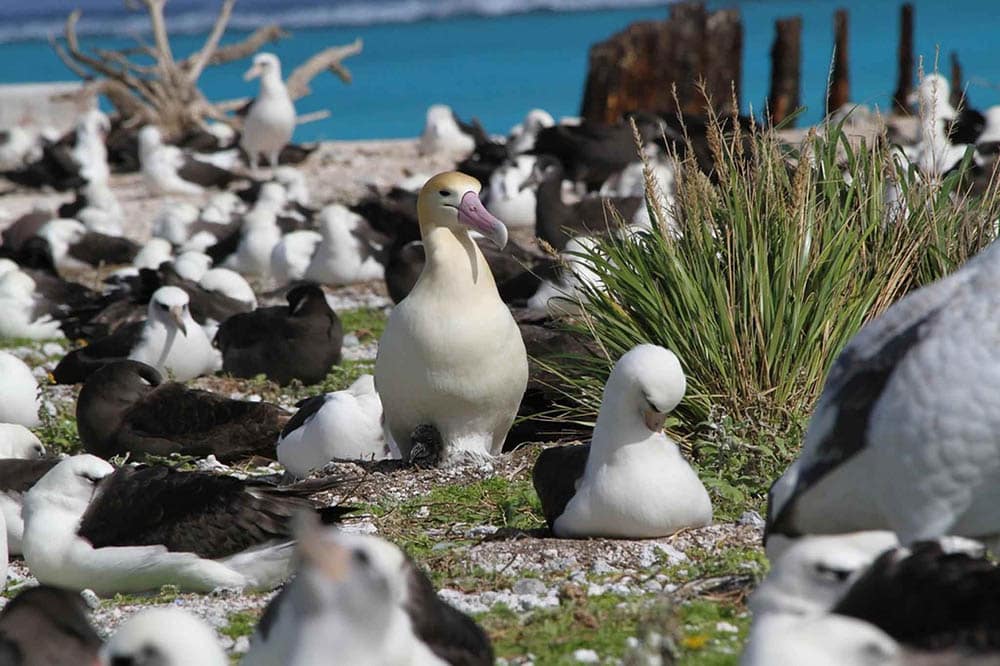
When most people imagine a bird’s nest, they think of nests up in trees, on roofs, or other high vantage points. Although some nests certainly are in these positions, there are many other locations for nests as well, including on the ground. In fact, there are many different types of nests and placements.
Below, we’ll look at 13 birds that lay their nests on the ground. You might be shocked to find out that many birds, including birds that can fly, prefer to nest on the ground.

Why Do Some Birds Lay Their Nests On The Ground?
There are many reasons why birds may lay their nests on the ground instead of the trees. Most obviously, birds that cannot fly have to lay their nests on the ground. However, flightless birds are not the only birds to lay their nests in this way.
In fact, gamebirds, shorebirds, waterfowl, and songbirds all lay their nests on the ground. This proves that there are many reasons why a bird may lay their nest on the ground, and it doesn’t always have to do with flightlessness.
For example, some birds lay their nests on the ground because there are very few trees around. This happens often in prairie areas and around shorelines where trees are minimal. If there are few trees, it makes sense that the birds adapt accordingly and plan their nests elsewhere.
In some locations, nesting on the ground is advantageous because it offers more cover. This additional cover will ensure that the eggs are as protected as possible. All the while, nesting on the ground increases the amount of food the birds have access to. Sometimes, it’s a mixture of all these reasons that cause a bird to nest on the ground.

Types Of Birds That Nest On The Ground
Of all the birds that can lay eggs on the ground, there are four main categories: gamebirds, shorebirds, waterfowl, and songbirds. Understanding these four categories will help you understand which birds lay their eggs on their ground and why.
Gamebirds
Gamebirds are species that are particularly valued for hunting purposes. Turkey, pheasants, and grouse are all examples of gamebird species that lay their nests on the ground. Most often, these birds will create a depression and line it with grass. After birth, the hatchlings can begin escaping predators almost immediately.
Shorebirds
Shorebirds are species that live right around water, especially around the ocean. Sandpipers, plovers, and avocets are shorebirds that all make their nests on the ground. Most often, these birds do this because there are very few trees available.
Waterfowl
Nearly all waterfowl are ground nesters. This includes geese, ducks, and swans. Although these birds can fly, they spend most of their time on the water or the ground.
Songbirds
The majority of songbirds nest in the trees, but there are some species that nest on the ground. Certain thrushes, juncos, and larks, for example, create ground nests. Unlike many gamebirds, songbird hatchlings are unable to walk at first, which makes it more difficult for them to escape from predators.

The 13 Birds That Lay Nests On The Ground
Now that we have learned why birds lay nests on the ground, let’s learn about 13 common species that do just that. These species belong to the categories of gamebirds, shorebirds, waterfowl, and songbirds.
1. Ruffed Grouse
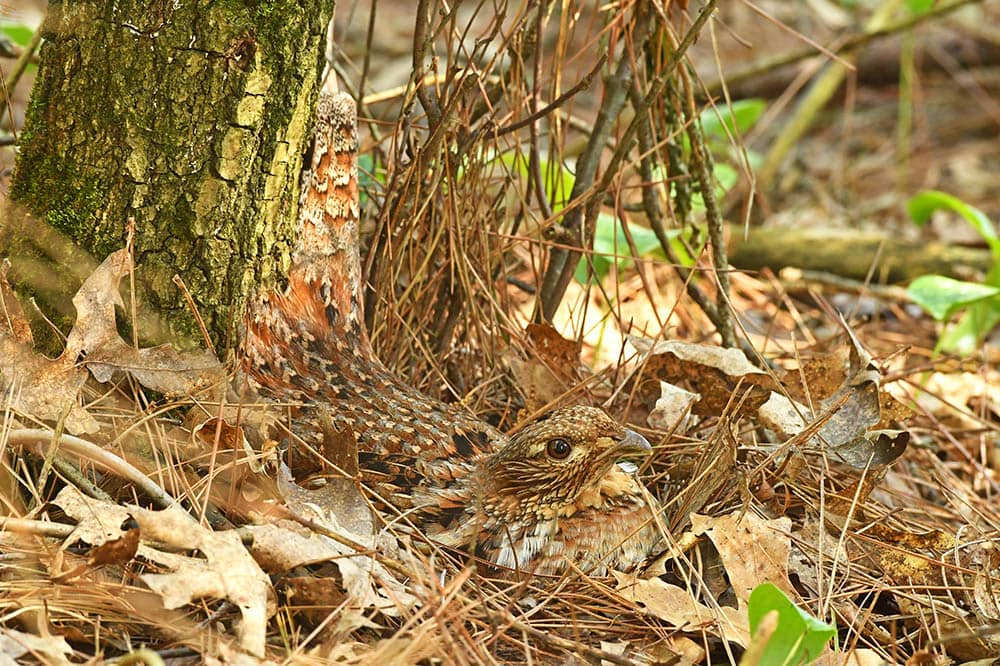
The first bird that nests on the ground on our list is the Ruffed Grouse. The Ruffed Grouse is a popular gamebird. Like many other gamebirds, it prefers to nest on the ground, especially around trees, rocks, or stumps. This will allow the bird to have a good lookout for any potential predators.
Once the parent finds a good location, it creates a bowl-like structure using leaves on the ground. They will also use other vegetation from around the site and line their nests with the materials they find.
2. Scaled Quail
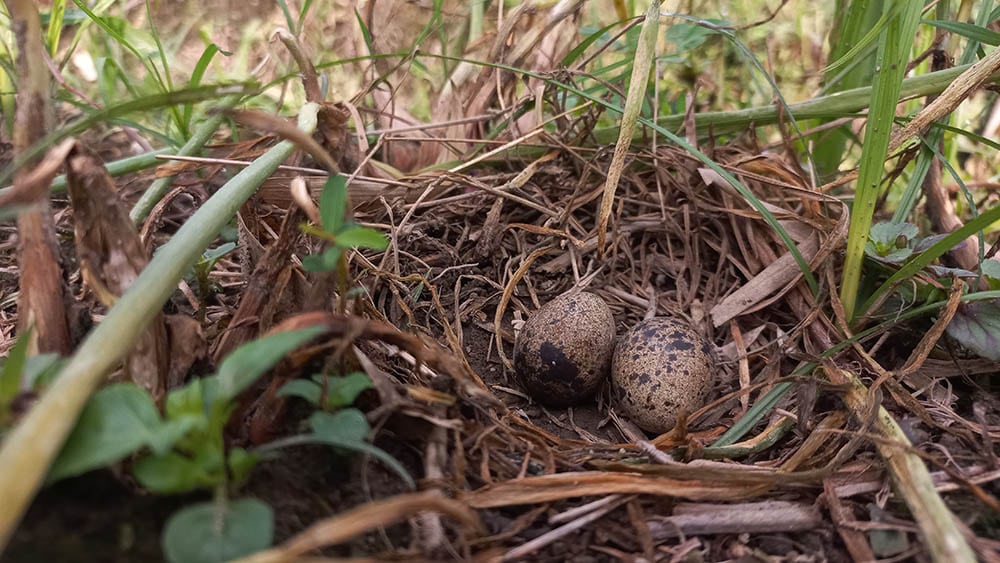
The Scaled Quail is slightly different from other ground nesters because it specifically looks for extensive cover, such as that from small trees or shrubs. Scaled Quails are even known to nest underneath agricultural equipment if in a farmland area.
The Scaled Quail nest is rather simple—it makes a simple bowl from leaves and grass. The nest is most often very wide and shallow.
3. American Avocet
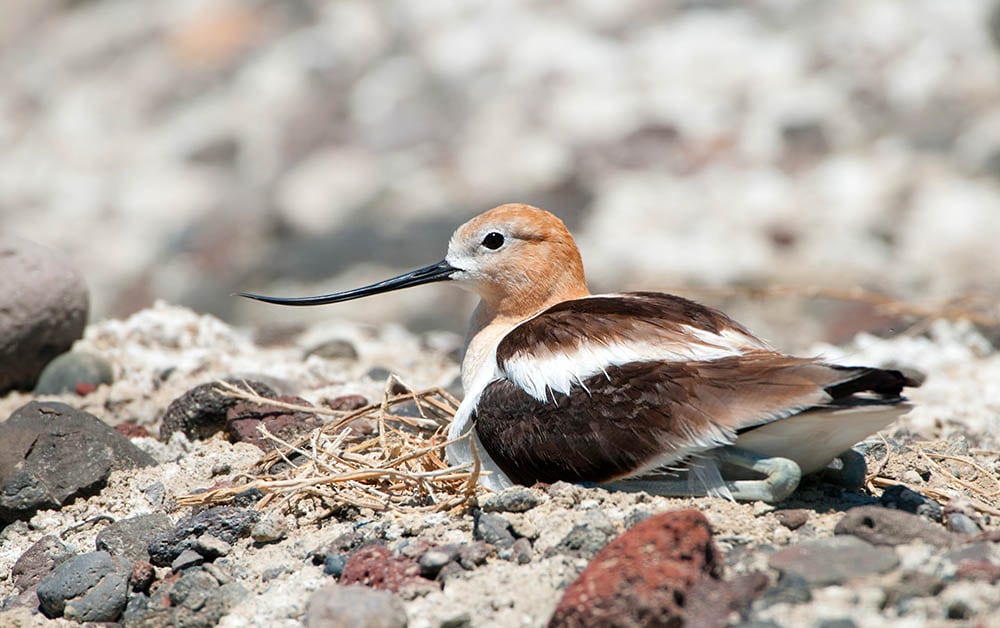
The American Avocet is a type of shorebird that nests on the ground. Most often, these nests are made from grass, pebbles, feathers, and other small, soft objects. These nests usually occur on islands or dikes where there are minimal trees and vegetation.
Because the nesting area has minimal vegetation, there is very little shade to protect the eggs. This puts the eggs at risk of overheating. The mother will dip its belly inside the water and then sit on top of the eggs in order to cool them off.
4. Common Tern
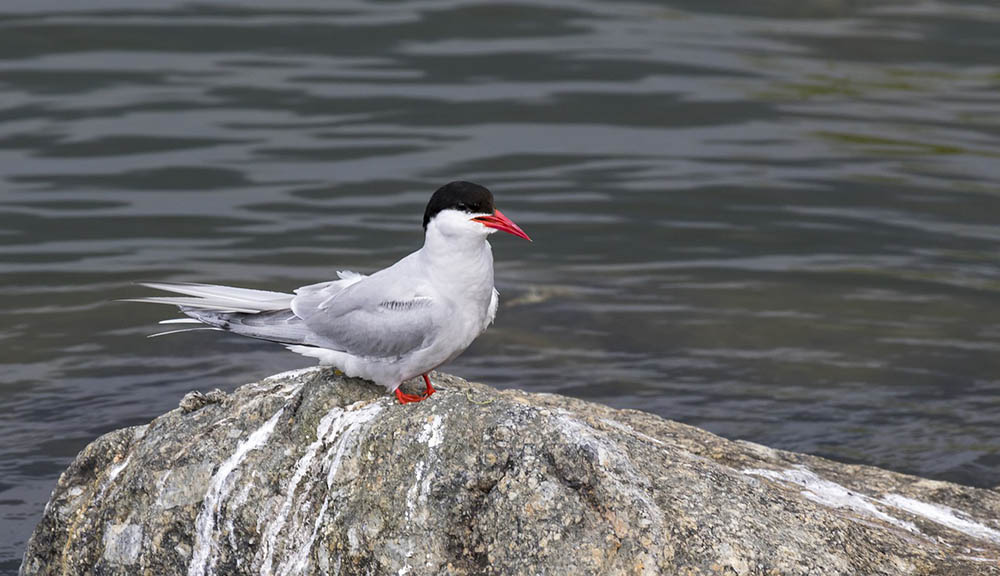
Common Terns can be found all over, but they are always found around bodies of water. They like to nest in colonies around the water. These colonies can be formed on sand, gravel, shells, and other similar material right next to the water.
Common Terns typically get any vegetation from the water as well. Basically, anything that washes ashore that the bird deems usable is used—even plastic and bones have been found inside a tern’s nest.
5. Killdeer

The Killdeer isn’t actually a shorebird, but it is often grouped with shorebirds because they almost always nest around bodies of water. That being said, Killdeers will nest in fields or pastureland if this sort of land is available to them.
Most often, Killdeers actually use gravel and stones to make their nests. This is why Killdeers often nest around bodies of water—they look for light-colored rocks, which are frequently found by ponds and rivers. Both the mother and father stay close to the nest in order to protect it.
- Related Read: Do Deer Eat Birds? The Strange Truth
6. Sandhill Crane
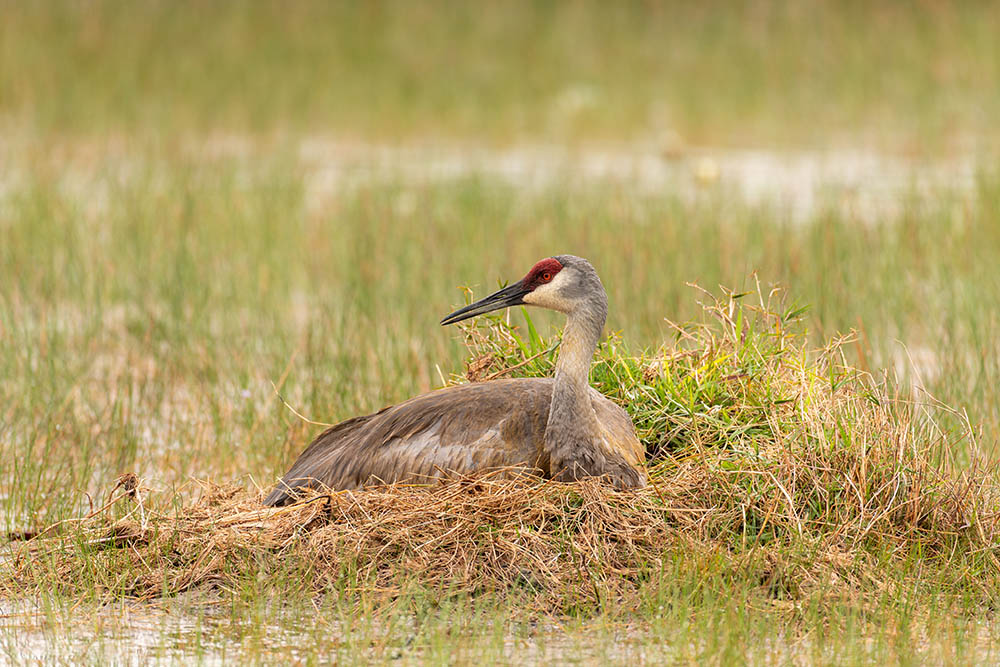
The Sandhill Crane wades in wet areas and marshes. They prefer standing waters and isolated habitats and will create platforms using marsh vegetation to create a cup-shaped hollow for their eggs. These birds will continue building their nests for quite a while so that green vegetation is always being added.
7. Virginia Rail

The Virginia Rail is similar to a shorebird in that it likes to wade in the water. It is mostly found in marsh areas where it likes to create bowl-like nests that are made from various marsh materials.
Often, the Virginia Rail nest is found at the base of tall vegetation. In this area, the ground is moist, which helps to keep the eggs safe from certain predators.
8. Canada Goose

The Canada Goose is one of the most recognizable types of waterfowl. Part of the reason these birds are so notorious is because of how aggressive they are at protecting their ground nests. Many unsuspecting people come too close to the nest, which causes the Canada Goose to chase them away.
Canadian Geese typically make their ground nests in areas around water that still provides good vision. The nest itself is often made from water plant materials such as lichen and moss, but grass and other materials are used as well.
9. American Wigeon
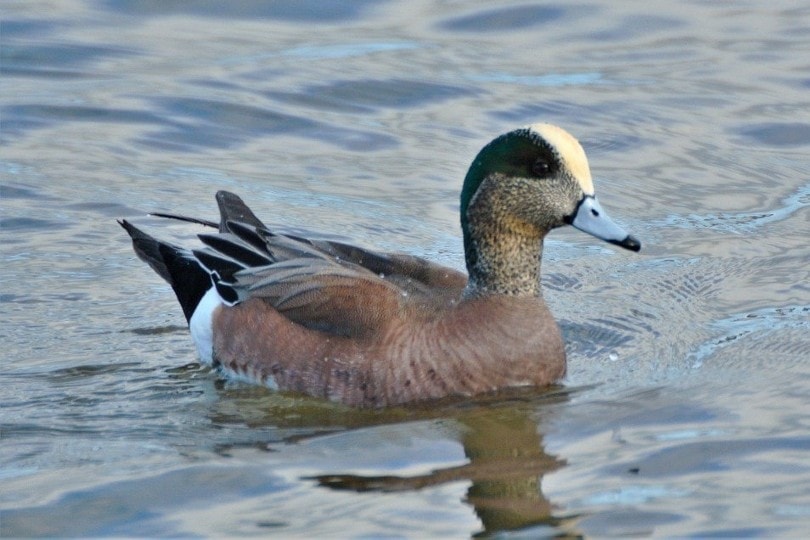
The American Wigeon is an interesting waterfowl to consider in terms of its nesting habitat. Whereas most waterfowl make their nests right around water, American Wigeons stay far away from water. Instead, they prefer grasslands and fields with tall grass.
The American Wigeon will create its nest by creating a depression in the ground. From there, it lines the depression with grasses and materials, including reeds and down feathers.
10. Orange-Crowned Warbler

The Orange-Crowned Warbler is the first songbird on our list. Most songbirds like to nest in the trees, but this isn’t the case for the Orange-Crowned Warbler. There are a few other warbler species that nest on the ground as well.
These nests are often found nestled into areas where they can be covered with vegetation. Most often, warblers make their ground nests by weaving layers of leaves and other materials together. Inside the nest, it is typically layered with levels of grass and hair in order to make the nest softer for the eggs.
11. Hermit Thrush
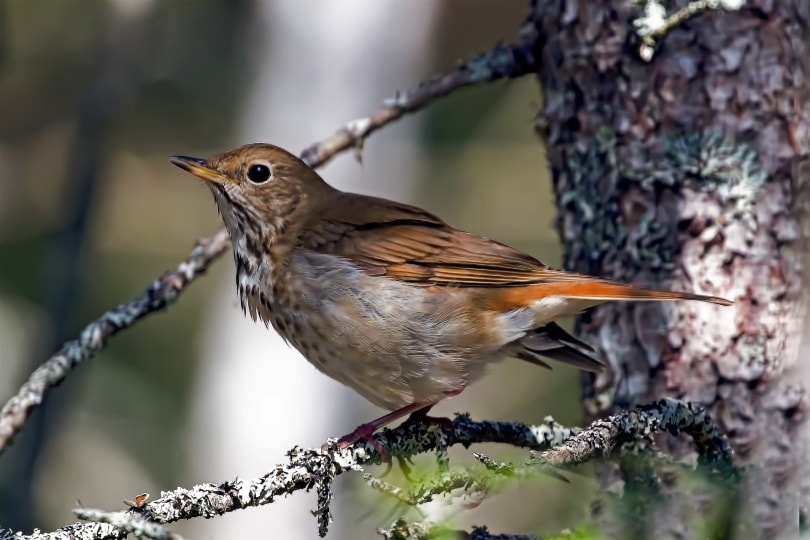
The Hermit Thrush is another songbird. It likes to nest around small trees, shrubs, and thickets so that the nest can easily be covered by the surrounding shrubbery.
Most often, Hermit Thrush nests are made from pine needles, wood, lichen, and mud. The bird will find plant material to use as a soft liner on the inside.
12. Whippoorwill

Whippoorwills are not technically songbirds, but they are sometimes mistaken as such because of their unique sound. Even so, this is one of the few birds that lay eggs on the ground directly—no nest is even required.
They aren’t too picky about where they lay their eggs either. Whippoorwills have been known to lay eggs in leafy matter, stones, and sand.
13. Burrowing Owl
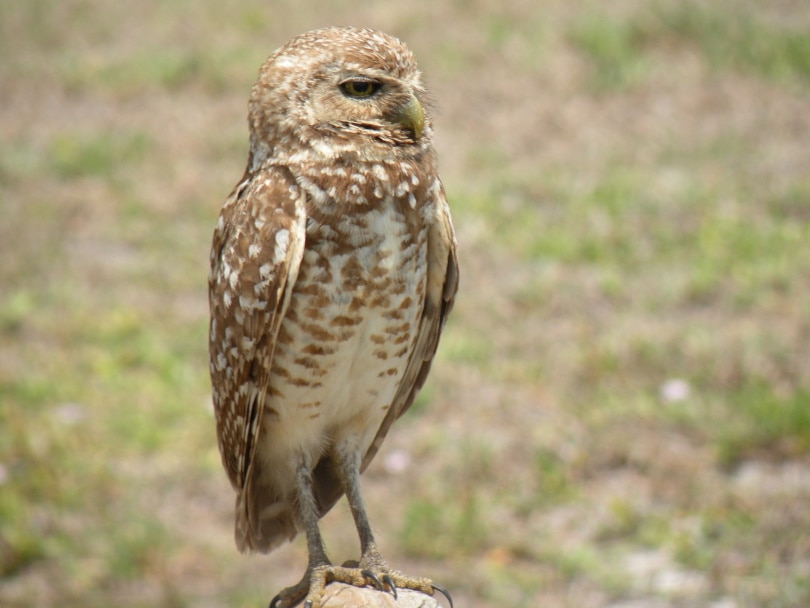
The last bird on our list is the Burrowing Owl. We strategically listed this last because it is the only Raptor that nests on the ground. The Burrowing Owl gets its name from the fact it burrows to create a nest underneath the ground.
Very rarely does the Burrowing Owl burrow the nest itself, though. Instead, it will find burrows left by other animals and nest in there. This makes the nesting process very easy.
- You might also be interested in: 6 Birds That Lay Eggs in Other Birds’ Nests (Brood Parasites)

Conclusion
Now that we’ve looked at 13 different species that lay nests on the ground, you can better understand how unique the nesting process is for each species. Although many bird species nest in trees, many others nest on the ground, too.
Featured Image Credit: PublicDomainImages, Pixabay
About the Author Robert Sparks
Robert’s obsession with all things optical started early in life, when his optician father would bring home prototypes for Robert to play with. Nowadays, Robert is dedicated to helping others find the right optics for their needs. His hobbies include astronomy, astrophysics, and model building. Originally from Newark, NJ, he resides in Santa Fe, New Mexico, where the nighttime skies are filled with glittering stars.
Related Articles:
What Is the Best Binocular Magnification for Hunting? Optical Features Explained
Monocular vs Telescope: Differences Explained (With Pictures)
How to Clean a Refractor Telescope: Step-by-Step Guide
How to Clean a Telescope Eyepiece: Step-by-Step Guide
How to Clean a Rifle Scope: 8 Expert Tips
What Is a Monocular Used For? 8 Common Functions
How to Clean a Telescope Mirror: 8 Expert Tips
Brightfield vs Phase Contrast Microscopy: The Differences Explained
